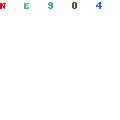So, I just had a great lunch yesterday with some coworkers and a software rep for a PIM (project information management) solution. Part of our conversation touched on integration and interoperability across platforms and disciplines.
One really interesting point the rep made was that their goal was to enable people to interact with their program from whatever "home" program a user was familiar with. This really caught my attention...
We all struggle with the number of applications we all need to "master" now a days. In contrast, this idea of ubiquitous data access in a smaller subset of programs really offers some advantages in efficiency for the end users of software. It turns the traditional "hub and spoke" diagram most software providers show with their program as the "hub" a bit on its head. In this model, each "role" or person uses whatever program they need for their primary tasks, and can pull all the other data in other programs and visualize in their own thus making every program a "hub" and a "spoke" simultaneously.
What can I say, I like it! So, that is why plugins are so important in Revit. Those plugins are going to enable us to create or answer RFI's, see energy efficiency results from our engineers, check on the LEED submittal processes that are related to building elements, or who knows what else all within the comfort of our "home" program... Yummy.
One really interesting point the rep made was that their goal was to enable people to interact with their program from whatever "home" program a user was familiar with. This really caught my attention...
We all struggle with the number of applications we all need to "master" now a days. In contrast, this idea of ubiquitous data access in a smaller subset of programs really offers some advantages in efficiency for the end users of software. It turns the traditional "hub and spoke" diagram most software providers show with their program as the "hub" a bit on its head. In this model, each "role" or person uses whatever program they need for their primary tasks, and can pull all the other data in other programs and visualize in their own thus making every program a "hub" and a "spoke" simultaneously.
What can I say, I like it! So, that is why plugins are so important in Revit. Those plugins are going to enable us to create or answer RFI's, see energy efficiency results from our engineers, check on the LEED submittal processes that are related to building elements, or who knows what else all within the comfort of our "home" program... Yummy.
Revit Modeling
ReplyDelete